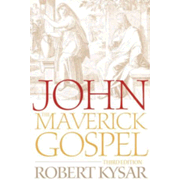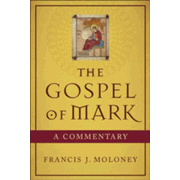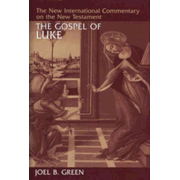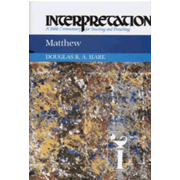OUR BIBLICAL study for the Fifth
Sunday of Lent is either from the Gospel according to Saint John, or from Saint Luke, depending on your denomination.
If you so desire to use the lesson from the Gospel According to Saint Luke, access the study at:
However, here in keeping with John's penchant for duality, in the reading for this Sunday we gain lessons
on both the power of the divine, staged against the onslaught of human
sinfulness. Our reading of John's gospel relates…
“Six days before the Passover, Jesus
came to Bethany, where Lazarus was, whom Jesus had raised from the dead. There
they made him a supper; Martha served, and Lazarus was one of those at table
with him. Mary took a pound of costly ointment of pure nard and anointed the
feet of Jesus and wiped his feet with her hair; and the house was filled with
the fragrance of the ointment.
But Judas Iscariot, one of his disciples (he
who was to betray him), said, "Why was this ointment not sold for three
hundred denarii and given to the poor?"
This he said, not that he cared for the poor but because he was a thief,
and as he had the money box he used to take what was put into it.
Jesus said, "Let her alone, let her keep
it for the day of my burial. The poor you always have with you, but you do not
always have me." (John 12:1-8)
 |
Backgrounds of Early Christianity, Third Edition By Everett Ferguson |
Comparative Readings….
In this week many deviate from the Lukan texts of previous lessons.. Here we have the disciples
described by John as gathered together for a sabbatical rest from their mission. They were in Bethany, which locates
just outside of Jerusalem. Centered in the story is the Lord Jesus, who
had raised Lazarus from the dead. This pivotal anointing event was recorded in all gospel
accounts, so as we peruse the gospels, we find similar witnesses of this
occasion in Mark 14:3-9, Matthew 26:6-13, and Luke 7:36-50. Given this wide
citation then, we wonder if by using comparative reading much can be learned from their
combined textual message. We can pick out the emphasis of each author. By this we gain a
view of a wondrous scriptural tapestry often missed by a more casual and
singular reading We can see that it reveals the particular motives of John.
First, looking in Mark (written c.65-70A.D.)
we find that the event was not in the house of Lazarus, though he may have been
present. The happening was recorded by Mark as occurring in the house of Simon the Leper.
Subsequently, in John’s later account, the name of Simon is omitted completely. It is as
though John wanted to completely ignore any emphasis on Simon and his heritage.
Also, in this earlier account, the community of Mark related that
the woman broke open a jar of ointment amid the gathered… and “they” reproached
her. So here we see a difference from John’s account, in that originally more than one person voiced objection to the use of the ointment. In
John, however, we read that only Judas objected.
This reading thus raises the question about whether
the omission of the other objectors was done by the later Johannine writer so
to affix all monetary hunger upon Judas alone. The discourse would thus highlight his money-compulsiveness... and his identity as a single, traitorous thief. We wonder today if this was done to
give greater status to the apostles, absolving them of any such trespass since they were long gone from the scene
by the date of the gospel’s writing?
 |
John, the Maverick Gospel, Third Edition By Robert Kysar |
Typically, the particular Markan view of the disciples was that they were rather slow-minded, low horizon, belly-button focused sinners. Thus in Mark they are described as completely missing the nuances of our Lord's numerous death predictions. We also notice in Mark, the reading related that Jesus stated that the woman from the streets was accomplishing the anointing in preparation for his burial. This seems to lay evidence that in Mark the disciples also collectively missed the meaning of this anointing. They had to be told once again about the impending death.
When we turn our attention to the Matthean
account (written c.85-90A.D.), we notice no mention was made of our Lord sitting at
the table. Subsequently, we do note that Matthew agreed that Jesus’ head was anointed. In
agreement with the account in Mark, Jesus said in response..,
“Truly,
I say to you, wherever this gospel is preached in the whole world, what she has
done will be told in memory of her."
Consequently, we see that Matthew’s gospel was more
comprehensive in that it included the birth narrative and many other features
where Mark did not. This may show that expensive parchment was more available for the church of Matthew, than for
the earlier penned Mark.
 |
Gospel of Mark, The: A Commentary - eBook By Francis J. Moloney |
Lastly, the Lukan gospel (written also c.85-90 A.D.) offers details that
read quite differently. In Luke, the anointing occurred in the house
of a Pharisee, and the occasion unfolded much earlier in our Lord’s ministry. As well, the ointment is
applied not only to Jesus’ head, but in agreement with John this related that
the anointing was specifically applied also to his feet. As well, a question posed to
Simon was nested into the account. We wonder then, "Was this Simon the disciple? Or was Simon the
Leper originally a Pharisee? Or has the author described a different anointing held in another household?"
Additionally, the Lukan account closed as the
woman of dubious identity had her many sins forgiven. This last act was not
mentioned in any of the other gospels, but may have been inserted due to
the pronounced Lukan preference for the sinful poor, who were widely scattered across the dispersed Roman Empire. Was
this his favoring of those later Gentiles in print... those who were thought to be religiously
deficient by the early Hebrew members?
Also we must note that these deviations in Luke
from the other accounts... may be attributed to the fact that the writer was not
directly interactive with Jesus, nor present at the anointing event. Luke’s gospel was therefore reconstructed from predecessor materials. We remember that he received the gospel stories from Mark and
a multiplicity of other sources. He only remotely described geographic locations and
historical relevance in second-hand fashion. However, we note that while not in the
same order, the story is told truly. In conclusion, therefore, we have the solid witness of this
event in all gospels, which surely occurred collectively through the miraculous prodding of the Holy Spirit.
How the Story Unfolds for John…
In the anointing of Jesus in Mark,
we see the beginnings of the Hebrew priestly ritual pattern found within the
tabernacle. In the temple cult of Israel, the ritual procession passed from the
altar toward the Holy of Holies, as the oil laver was reached. Once the associate
priests were purified, the High Priest then took part. Entering
the Holy of Holies alone, the High Priest interceded in the ceremony, but not for his own
salvation. He prayed for the whole people of God; indeed for their keeping
and blessing. Therefore, it seems that the anointing of Jesus that was done just outside of
Jerusalem by a sinner, which was occasioned before his ride into the holy city… fitted
the traditional ritual pattern. The supper at Bethany was closely followed by our Lord's triumphal
entry into Jerusalem.
The text is remarkable in Luke, because it contains the visit of certain Greeks to the disciples. It is apparent in this scene that John related strongly to his Greco-Roman roots. Why was this so important? In answer, it seems that ancient Greek tales of warrior preparations came into play. In John, the woman from the streets in other gospels... has the name of Mary, who was the sister of Martha and Lazarus. All were members of a household in Bethany. There, she in near wifely-fashion anointed Jesus. This thread follows the ritual pattern we read about in Greek narratives concerning the war preparations of Spartan warriors. Spartan soldiers were anointed for burial before a battle… by their women, and thus sent off bearing shield, spear and armor. All this while hearing from their wives... “Come home carrying your shield or upon it!”
The text is remarkable in Luke, because it contains the visit of certain Greeks to the disciples. It is apparent in this scene that John related strongly to his Greco-Roman roots. Why was this so important? In answer, it seems that ancient Greek tales of warrior preparations came into play. In John, the woman from the streets in other gospels... has the name of Mary, who was the sister of Martha and Lazarus. All were members of a household in Bethany. There, she in near wifely-fashion anointed Jesus. This thread follows the ritual pattern we read about in Greek narratives concerning the war preparations of Spartan warriors. Spartan soldiers were anointed for burial before a battle… by their women, and thus sent off bearing shield, spear and armor. All this while hearing from their wives... “Come home carrying your shield or upon it!”
It seems that John's writing
portrays for us Jesus Christ, the Divine Warrior. He was anointed in Greek
fashion from head to toe. Jesus was thus prepared for battle even unto death. His
death would indeed occur in the war against Satan, which frees us from the rule of evil worldly powers and punishment of eternal death. It seems to my thinking that John understood this
mission in Greek warrior fashion, for when we read farther in the chapter we
find…
“Now among those who went up to
worship at the feast were some Greeks. So these came to Philip, who was from
Beth-saida in Galilee, and said to him, ‘Sir, we wish to see Jesus.’
Philip went and told Andrew; Andrew went with
Philip and they told Jesus. And Jesus answered them, ‘The hour has come for the
Son of man to be glorified. Truly, truly, I say to you, unless a grain of wheat
falls into the earth and dies, it remains alone; but if it dies, it bears much
fruit.”
Thus in the context of this scene unfolding in the Johannine Greek world, Jesus was likely tempted by Greek proselytes in the faith... to come away with them, and be regarded highly as a rabbi and spared any violence. Jesus refused their overtures and revealed himself as being Christ, the Deliverer for all persons.
Why Now Do We Hear?
We may ask, “Why does our Church
lectionary deliberately deviate from the previous week's Lukan narrative in order to bring us this clarity from John?" According to
this text, I believe that if we ascribe to John’s penchant toward the
symbolic, we easily see that the woman in the text... though unidentified except as a
sinner in some gospels... represents all sinners! She represents the Church found in need... we human sinners in both
the early Church and now… who are located in every land and time.
Jesus was shown indisputably described as the Word of God in John's Prolog... located in the beginning of the gospel's first chapter. Therefore the Word became flesh and he came to do battle against evil, to sets us free from bondage to sin and death.
Jesus was shown indisputably described as the Word of God in John's Prolog... located in the beginning of the gospel's first chapter. Therefore the Word became flesh and he came to do battle against evil, to sets us free from bondage to sin and death.
After the woman applied the oil and spices, we note that Jesus stood like King David of old… and also as a dedicated Greek warrior. Consequently, he
carried scriptural prophecy into dramatic conflict for the souls of both Hebrew
and Gentile, as he contended against Satan and the demons of this world. Dying on the
cross as the bearer and subject of the Law, he became for us the shield of salvation.
 |
Gospel of Luke: New International Commentary on the New Testament By Joel B. Green |
You see, sisters and brothers, our Lord carved a new kingdom using the double-edged sword of Law and Gospel. Therefore John’s community, those who lived in the latter first century A.D. with Hebrew, Greek and Roman populations, could accept this grace. Consequently the gospel spread out very far in their day. The Church was thus formed firmly in the knowledge of God’s redemptive plan and widely related the death and Resurrection of Christ our Lord.
In particular, we note that in John’s gospel, both the head and feet of Jesus are washed and anointed, and he soon turned and washed the feet of his disciples. As well he anointed them with priestly oil. Now consider this! Just as Jesus did these things to the disciples, he also reveals himself to us through the words of Mark, Matthew, Luke and John. Then through the Holy Spirit, he and the Father are baptizing and anointing each person within the Church. Thus we who are those of his saving are called to stand tall... so that we may witness to others that our salvation comes through this faith that was given to us. Thus through baptism we are also anointed for battle! So it is written, and so it shall be.
We offer this video as witness...
May the Lord bless and keep you!



No comments:
Post a Comment